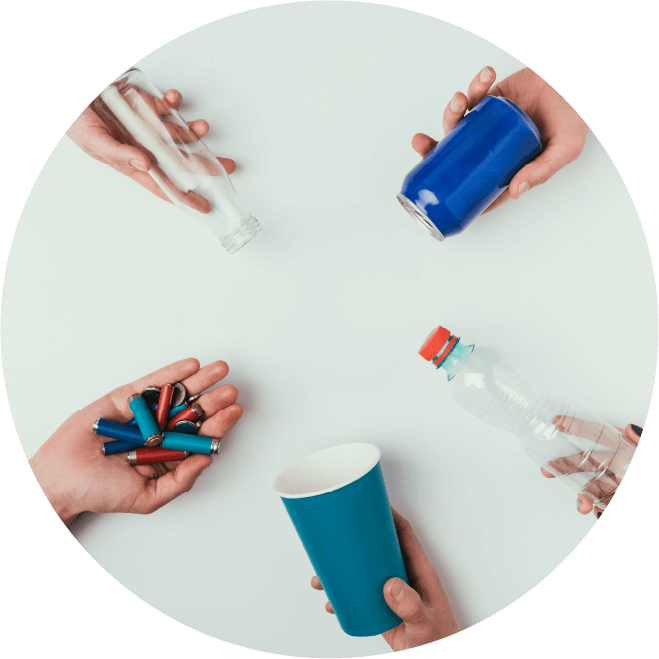From “Throwing Away”
to “Connecting”:
Children’s Hands-On
Encounters with the Circular Economy
The Ministry of Economy, Trade and Industry held the Circular Economy Lab at Expo 2025 Osaka, Kansai from September 23 to 29, 2025, offering visitors a fun and engaging way to learn about the circular economy. This article shares insights and discoveries from the exhibits and stage events at the venue.
In the previous report, we explored the foundations of the circular economy through four actions: BUY, USE, SORT, and PASS ON. In this report, we take a step further to highlight how children experienced a “circular way of living” firsthand at Expo 2025 Osaka, Kansai.
The event featured hands-on programs such as a remake workshop where participants gave new life to forgotten clothes, a flea market app workshop where they connected unwanted items with new owners, and a computer disassembly program where they searched for hidden “treasures” inside. These experiences encouraged children to look at familiar objects from new perspectives and realize that there are choices beyond simply throwing things away.
− USE −Making circulation personal through remake and repair
Do you have clothes at home that you just can’t bring yourself to throw away? Perhaps a piece you’ve grown a little tired of, one that no longer fits, or one filled with memories you can’t let go of. The power of remake lies in adding a new design to such garments, giving them a second life as part of your everyday wardrobe once again.
At the venue, members of NewMake—a community of creators involved in fashion design and related fields—gathered to help children bring their ideas to life.
On this day, the children became designers. Working with professional creators, they transformed long-forgotten clothes into one-of-a-kind pieces.
– A dress their mother no longer wore was tailored to their own height and reborn as a short dress.
– A favorite T-shirt with a small stain gained new life with a pocket made from fabric prepared at the venue, adding both a new look and new function.
– A patterned dress that was difficult to wear as everyday clothing was redesigned into a subtler style that could be worn to school, with plain fabric sewn over parts of the print.
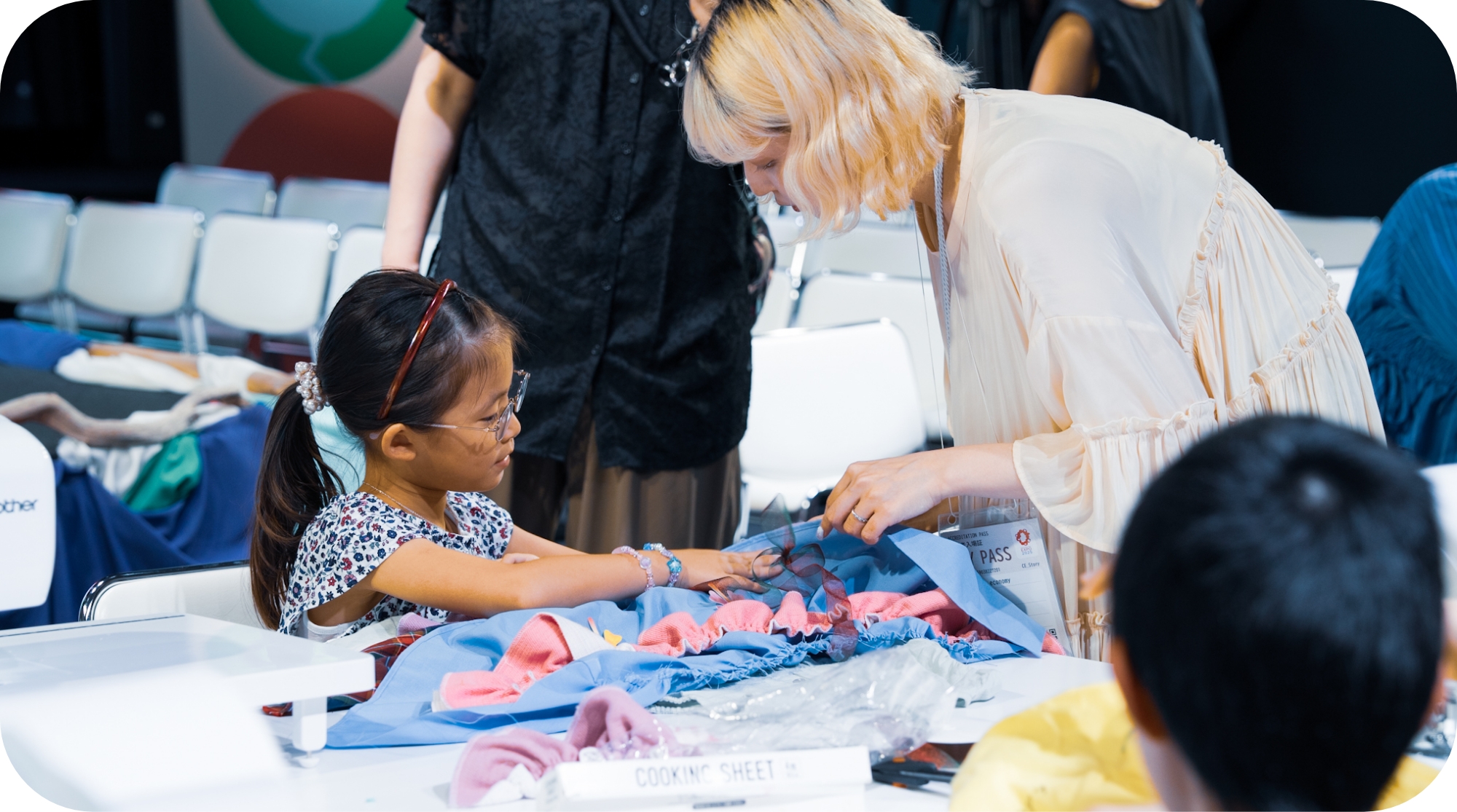

What left a strong impression was how intently the children watched the creators’ hands move swiftly over the sewing machines. According to Hosokawa, representative of NewMake, this scene—once a common sight in households—is gradually disappearing.
“People today have fewer chances to see or use sewing machines at home, and more are growing up without knowing how clothes are made. Just as watching someone cook can nurture a sense of appreciation for food, experiencing how clothing is made by hand can foster a deeper respect for the things we own.”
Understanding who makes our belongings, where, and how—that awareness is the first step toward rethinking our relationship with the things around us.
That said, it’s not easy to make big changes in our everyday lives. So where should we begin?
“Start with something that feels fun or doable for you. For example, simply ironing on a patch to cover a hole or stain is enough.”
The words “remake” or “repair” may sound a little daunting, but anyone can try something as simple as applying an iron-on patch. There’s no need to aim for perfection. Building up small moments of success—one step at a time—can lead to even greater circular actions in the future.

At the end of the event, the children took to the stage in their remade outfits for a fashion show alongside Myaku-Myaku, the official character of Expo 2025 Osaka, Kansai.
After the show, one brother and sister cheerfully exclaimed, “We want to go home wearing the clothes we remade!” as they left the venue, proudly dressed in their newly transformed creations. Another participant said, “I want to try using the sewing machine when I get home.” That day, the children may have taken a small but meaningful step toward making the idea of “circulation” something personal to them.
Each small moment of joy and discovery spreads from one person to another, creating a ripple effect. And it is at the end of that ripple where the future envisioned by the circular economy begins to take shape.


− BUY / PASS ON −How Much Would This Sell For?
A Guide to Making Reuse
Part of Everyday Life
Remaking isn’t the only way to avoid throwing things away. Another option is to make use of flea market apps.
While community bazaars and flea markets also allow people to buy and sell directly with one another, they’re often limited by date and location, which can make them less accessible. Apps, on the other hand, let users trade anytime, anywhere—and their convenience has made them popular among many people today.
Still, many might say, “I’ve bought something on a flea market app before, but I’ve never actually sold anything.” To encourage children to try selling, a hands-on workshop was held at the venue where they could list unwanted items.
Each participant chose one item from a selection of clothes, hats, bags, toys, mugs, and spoons provided at the event—treating it as if it were something “unwanted and lying around at home.” Using a special worksheet called the CE (Circular Economy) Observation Notebook, developed with cooperation from Mercari, Japan’s leading flea market app, the children imagined creating a listing page. They answered questions such as “How much has it been used?”, “Why are you selling it?”, and “How much would you like to sell it for?”—all while thinking through the process of putting an item up for sale.

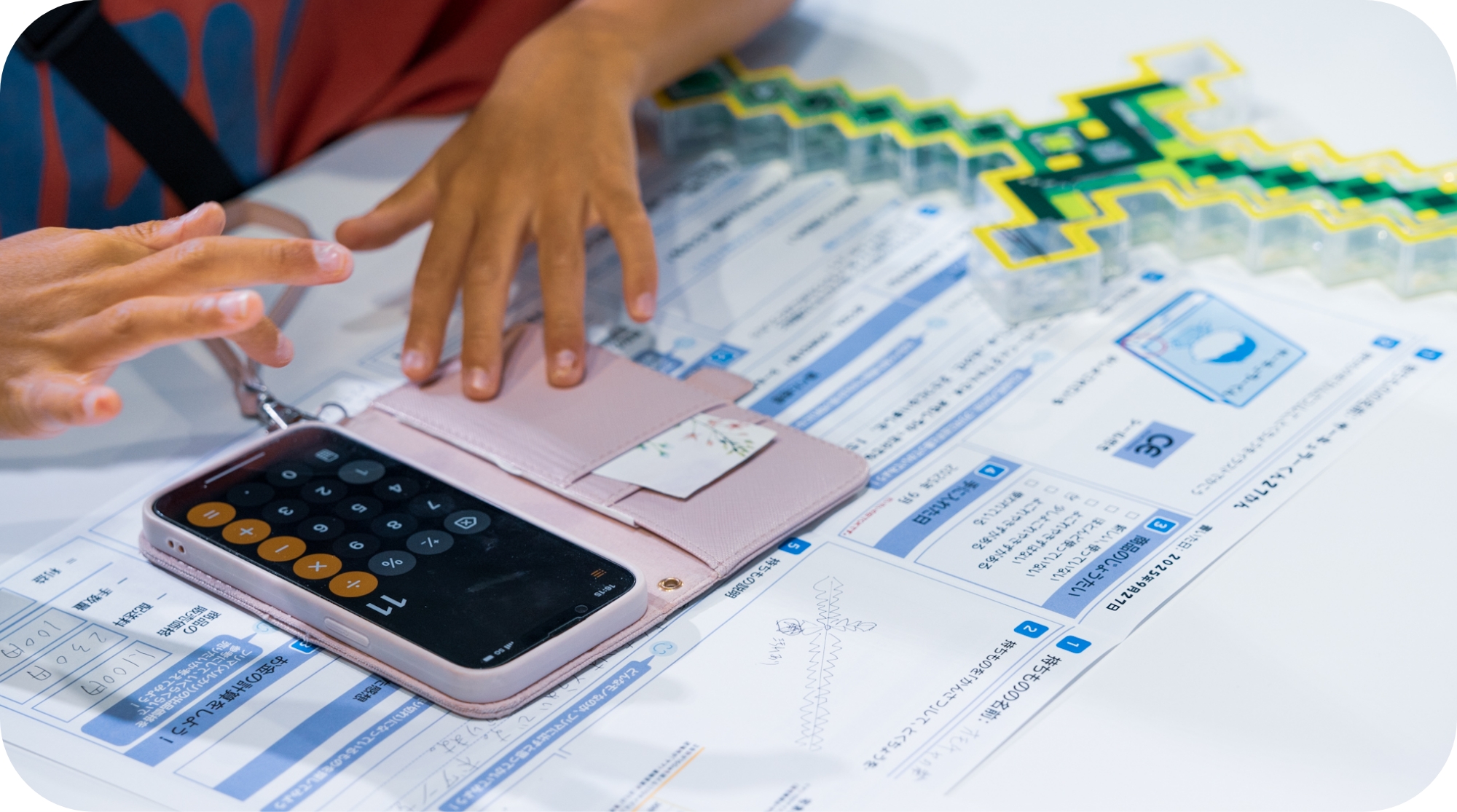
The children carefully examined each item, noting its unique features and expressing them in words. Even small scratches or subtle shades of color became important details—messages to help connect the item with its next owner.
At the end, they calculated their profit after deducting shipping costs. Excited voices filled the room as some called out, “I made a profit!” Through this experience, the children discovered the fun of earning a little pocket money by selling instead of throwing things away.
While “throwing away” may feel like the easiest option today, having a simple guide to encourage that first step of “selling it yourself” can make the choice not to discard something much more approachable. The CE Observation Notebook served as that small but meaningful starting point toward a more circular way of living.

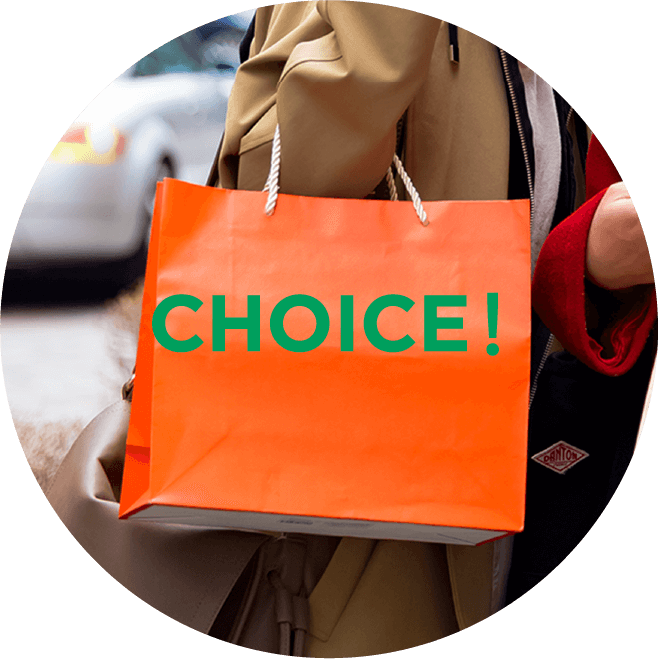
− SORT / PASS ON −Discovering Hidden Resources through
“Disassembly”: Why Sorting Matters
Even the things we’ve cherished and used for many years eventually reach a point where they can no longer be used. When that time comes, what matters most is sorting them properly. But why is it so important for us to “sort” items before letting them go?
The answer could be found in a hands-on computer disassembly experience held at the venue. Let’s take a look at what happened!
Wearing safety goggles and holding screwdrivers, participants carefully took apart laptop computers with their own hands. They twisted out tiny screws one by one, removed the plastic covers with care, and as they continued unscrewing, a network of intricate wiring and gleaming components gradually appeared from within.
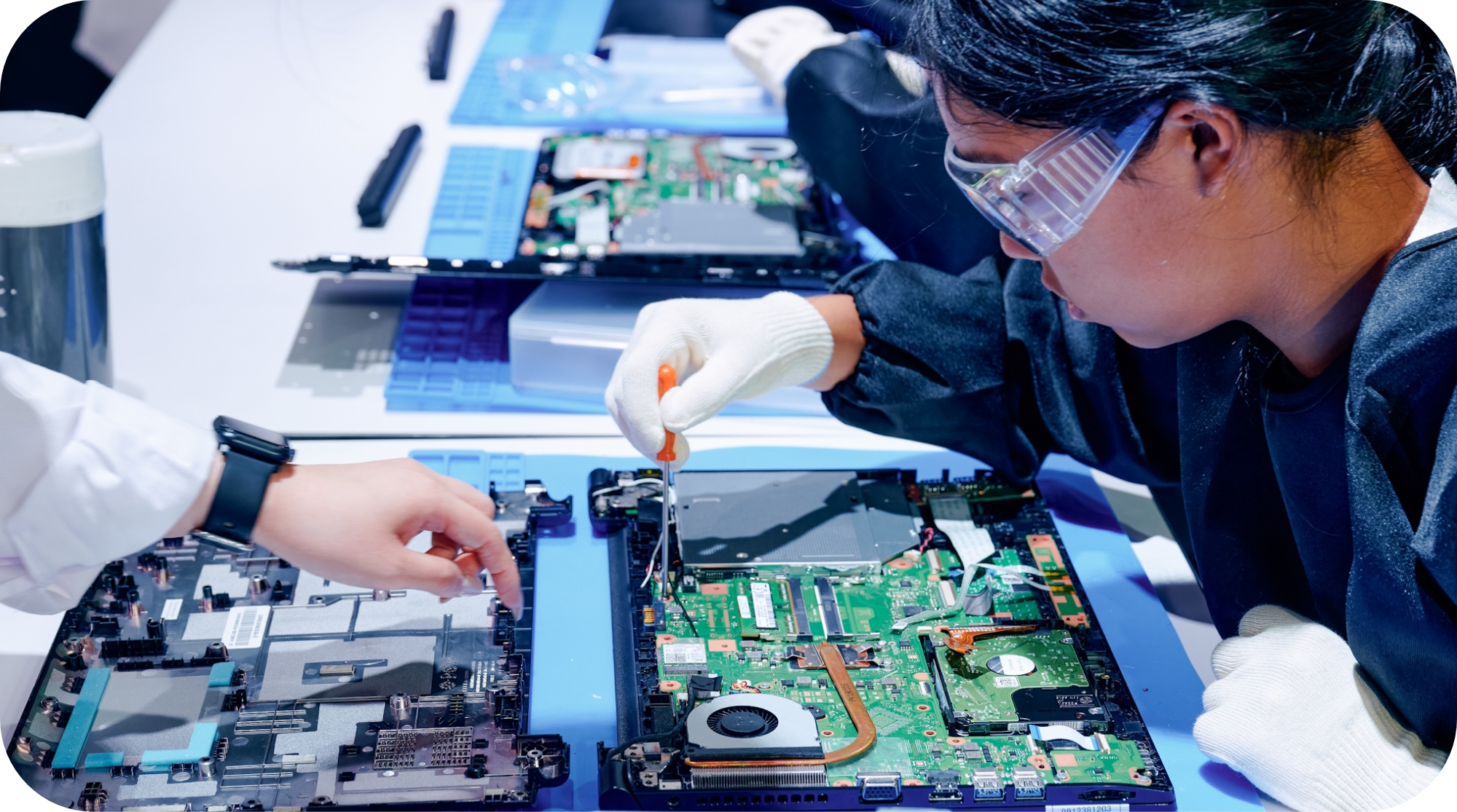
“I got it!” — The children shouted with excitement as they focused on removing each part, feeling like treasure hunters. They listened eagerly as staff explained, “There’s lithium in this part,” and “This tiny component contains 0.3 grams of gold,” their eyes sparkling with curiosity. Even the adults watching couldn’t help but lean in for a closer look, fascinated by the intricate array of components.
Indeed, a laptop contains countless parts, some of which hold valuable resources such as precious metals and rare metals—collectively known as urban mines. If these items are discarded without being properly sorted, those precious resources are lost along with them. On the other hand, by sorting them correctly, materials like gold can be “passed on” and reborn as part of new products, continuing their life in another form.
And this doesn’t apply only to laptops—every household appliance around us is, in fact, a treasure trove of valuable resources.

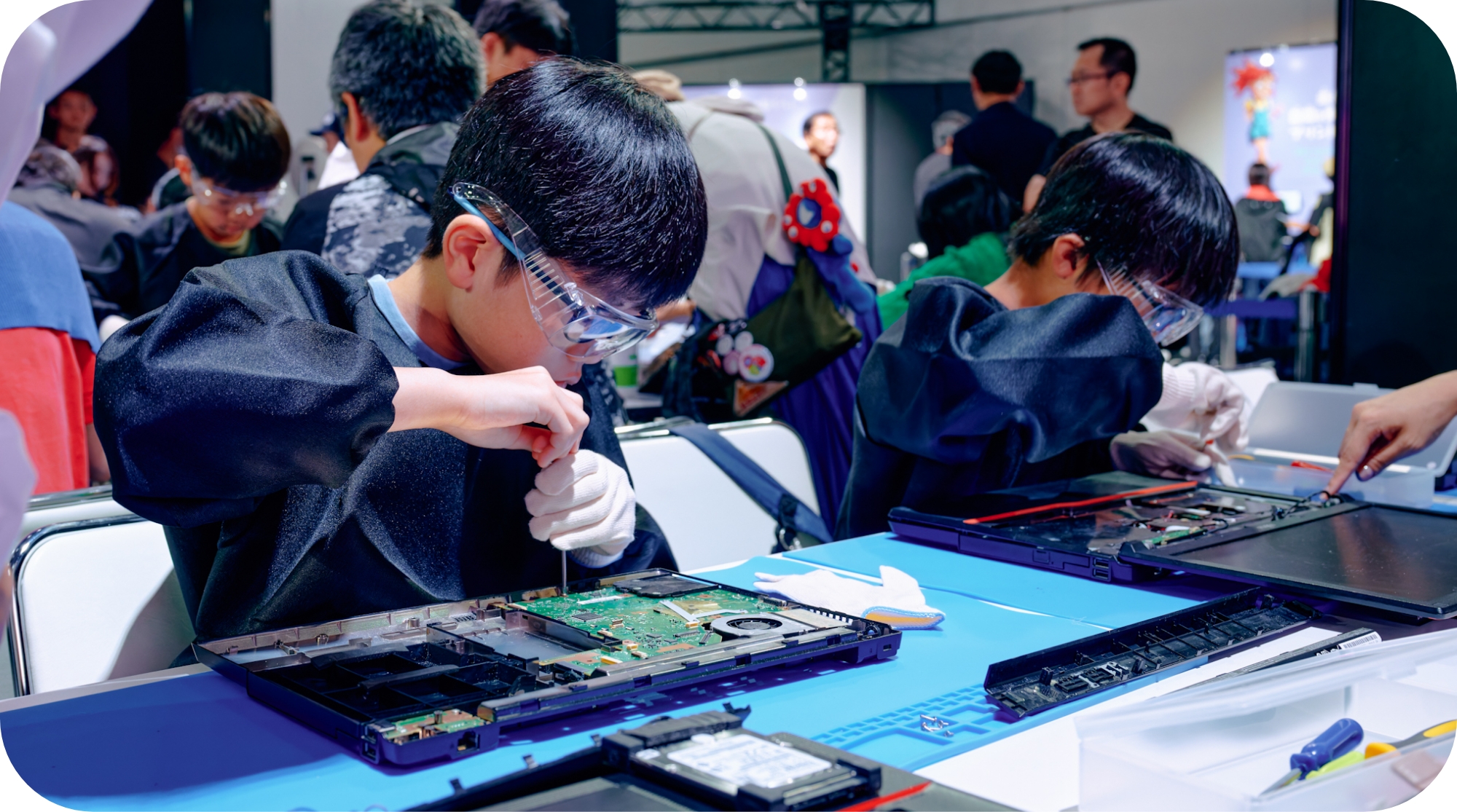
Even when an item breaks and can no longer be used as before, its value isn’t lost.
If you throw it away, it becomes waste—but if you sort it, it becomes a resource. By “sorting properly” and “disposing properly,” each of us helps preserve that value and give it the potential to become part of the next product.
When replacing a smartphone or computer, try looking for collection boxes or recycling services that operate under Japan’s Small Waste Electrical and Electronic Recycling Act (Japanese Only). You may be surprised to find that the gateway to circular living is closer than you think.


From Personal Experience,
Stories of Circulation
Begin to Grow
The circular economy can seem like an abstract, hard-to-grasp concept. Many people may feel that it’s difficult to truly experience it in their daily lives.
But as this article has shown, the doorway to circular living is often closer than we think. Making something with your own hands, repairing an item, or passing it on to someone else—each of these personal experiences becomes a seed, growing into stories told in our own words and inspiring the next person to take action.
Stories told in the first person have the power to move people. As those stories spread, they create the foundation for a more circular society. So let’s enjoy those small moments of success and gradually make our lives a little more “circular.”













